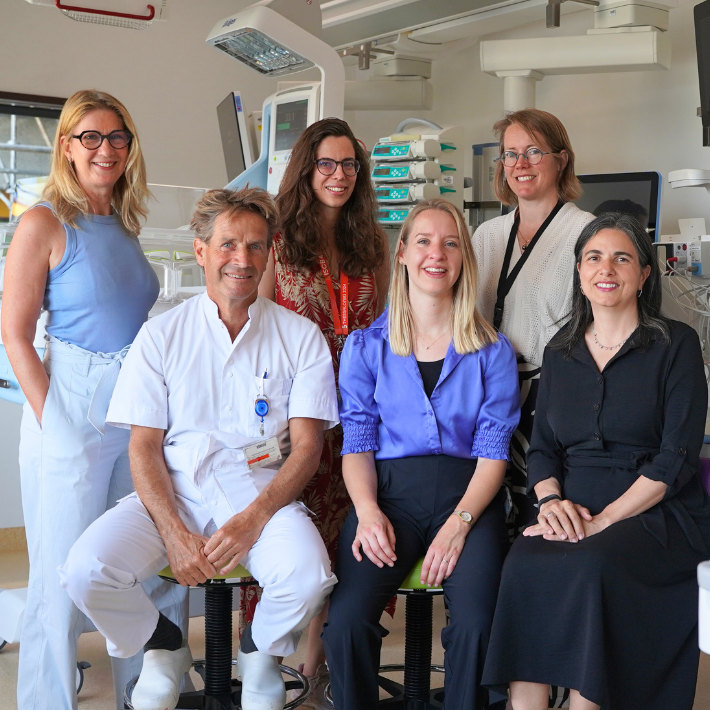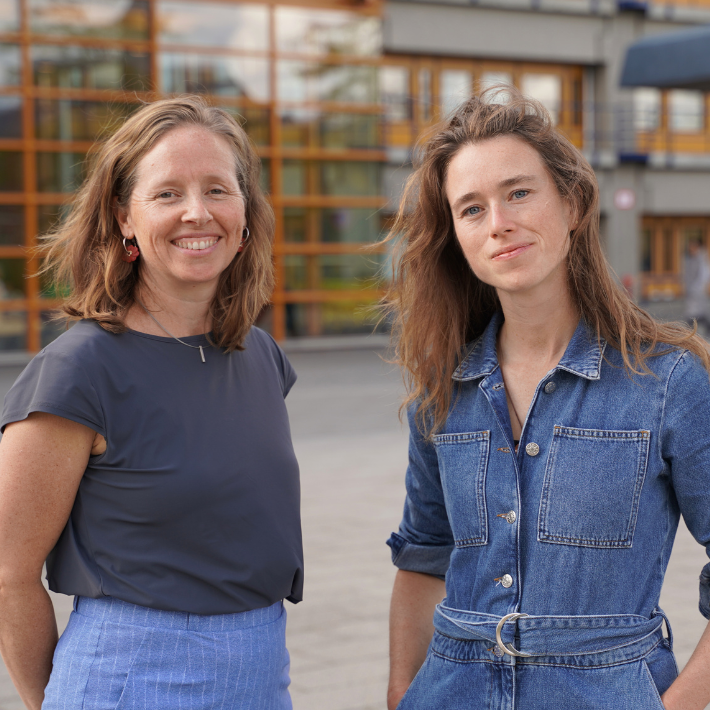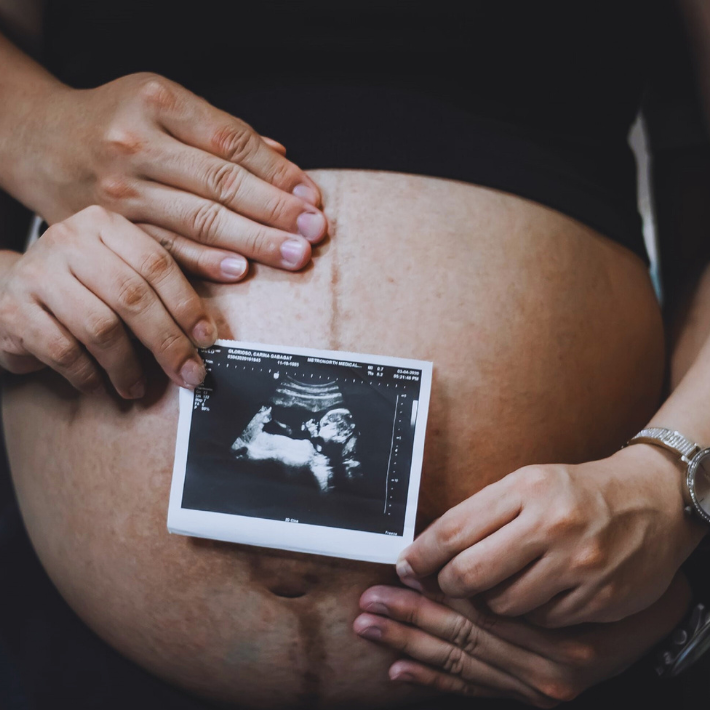Researchers develop decision model for platelet transfusion in premature babies
Standing (from left to right): Anske van der Bom, Ilaria Prosepe, Nan van Geloven. Seated (from left to right): Enrico Lopriore, Hilde van der Staaij, Camila Caram-Deelder.
&width=710&height=710)
The study has been published in the leading scientific journal JAMA.
Platelets are small particles in the blood and essential for blood clotting. A shortage of platelets can lead to severe bleeding. That’s why premature babies sometimes receive a preventive transfusion, even before any bleeding has occurred.
Previous research has shown that giving platelets via transfusion is not always advisable. Babies who received a transfusion at a level of 50 billion platelets per liter of blood (50×10⁹/L) actually had a higher risk of severe bleeding or death due to the transfusion. Therefore, the international guideline now recommends giving a preventive transfusion only when the level is below 25×10⁹/L.
“Until now, it was only proven that in some circumstances it is not good to give platelets,” says physician-researcher and PhD candidate Hilde van der Staaij* from the Neonatology Department at LUMC. “But when it is a good time, that had never been scientifically demonstrated.”
[The text continues below the block]
A model that predicts risks per child
The researchers developed a decision model that calculates the risk of severe bleeding or death for each baby, at each moment. What makes this model unique is that it predicts causally. This means it forecasts what will happen if a doctor performs a medical action. In this case, the model calculates and compares the risks of two scenarios:
- A platelet transfusion (within 6 hours)
- No platelet transfusion (in the first 3 days)
The model looks not only at the platelet count but at a combination of medical factors, such as:
- Gestational age
- Intrauterine growth restriction
- Age since birth
- Number of previous platelet transfusions
- Whether the baby is on a ventilator
- Presence of sepsis or intestinal inflammation
- Whether the child is receiving heart or blood pressure medication
- Duration of severe platelet shortage
“It’s not one factor that determines whether a transfusion helps; it’s the combination,” says Van der Staaij. “A baby on a ventilator with an infection has a different risk than a baby who is just small but otherwise stable.”
When the baby’s condition changes, the model recalculates. This way, it continuously predicts the effect of a transfusion. This also makes the model special. “You can consult the model at any moment,” says Van der Staaij.
Model successfully tested
The model was developed using data from more than a thousand premature babies (gestational age up to 34 weeks), admitted between 2017 and 2021 to neonatal intensive care units (NICUs) in the Netherlands, Stockholm, and Berlin. This collaboration was initiated by the Neonatology Network Netherlands (N3), a national research network of all Dutch NICUs, and the international Neonatal Transfusion Network (NTN), a multidisciplinary research network focused on transfusions for premature babies.
To validate the model, the researchers used data from their earlier national study of over 600 premature babies, admitted between 2010 and 2015 to one of seven NICUs in the Netherlands. Every two hours, all available data from the baby were updated in the decision model. The model then calculated the theoretical chances if the baby were to receive a transfusion or not. These predicted chances turned out to match well with the actual (observed) outcomes of these babies.
Not just for babies
Although the model was developed for premature babies, the method is broadly applicable according to the researchers. In the study, they show how good data and smart research methods can be used to predict risks for various treatments—not only for newborns but also for other medical decisions.
Van der Staaij: “Our study serves as a guide showing how to make action-oriented predictions and which steps to follow.” Fellow scientists worldwide can now build on this. This aligns with the principles of open science: sharing knowledge publicly and providing transparency.
An example for the future
The model has been successfully tested, but according to Van der Staaij, it is not yet ready for clinical use. “It’s a first step. Follow-up research is needed to determine at what risk level a transfusion should or should not be given. It also needs to be proven that the model truly leads to better care and fewer bleedings and deaths. The researchers emphasize this in their study. Until then, the advice remains to give a platelet transfusion only at levels below ‘25’, as the international guideline prescribes.”
Bringing smart minds together
For years, the LUMC has been conducting research into blood transfusions in collaboration with Sanquin Research, exploring how to learn from medical data. Thanks to that experience, a self-developed calculation method, and the availability of detailed data from the NICU, a new model could be created. “This study didn’t come out of nowhere. We’ve been working towards this for years. Now everything is coming together,” says Van der Staaij. The research shows what’s possible when you combine high-quality medical data with smart research methods and collaborate with hospitals in the Netherlands and abroad. It leads to care that better fits the personal situation of each patient—now for babies in the NICU, and in the future for many more people.
This study is a collaboration between:
The departments of Clinical Epidemiology (Anske van der Bom, Camila Caram-Deelder), Biomedical Data Sciences, section Medical Statistics (Nan van Geloven, Ilaria Prosepe), and the NICU’s of the LUMC (Enrico Lopriore, Hilde van der Staaij), Amsterdam UMC (Wes Onland, Sandra Prins), Erasmus MC (Florian Cassel), Isala Klinieken (Esther d’Haens), Maastricht UMC+ (Elke van Westering-Kroon), Máxima MC (Peter Andriessen), Radboudumc (Sabine Vrancken), UMC Groningen (Christian Hulzebos), UMC Utrecht (Daniel Vijlbrief), Charité Universitätsmedizin Berlijn (Christof Dame) and the Karolinska Instituut Stockholm (Emöke Deschmann); London School of Hygiene & Tropical Medicine (Ruth Keogh) and Sanquin Research (Suzanne Fustolo-Gunnink, Karin Fijnvandraat).
*During her PhD research, Hilde van der Staaij also held a position at Sanquin Research.

&width=710&height=710)
&width=710&height=710)